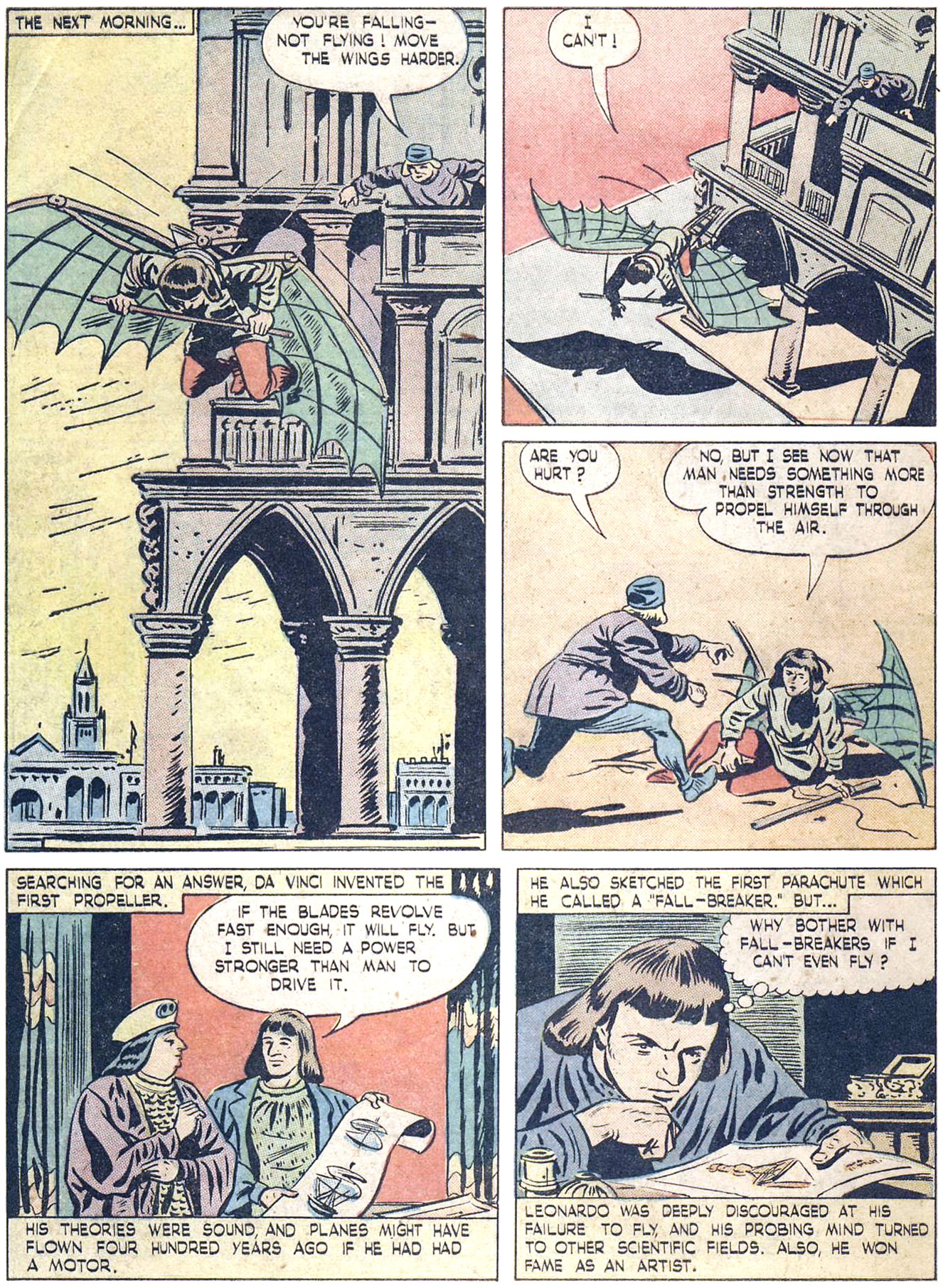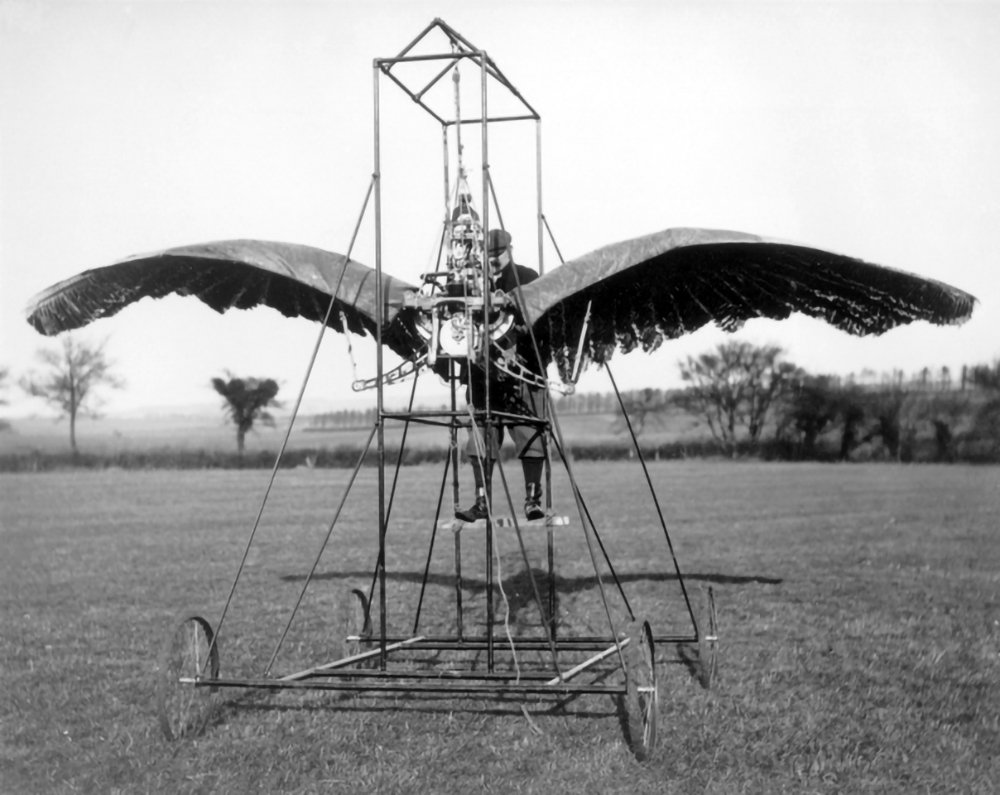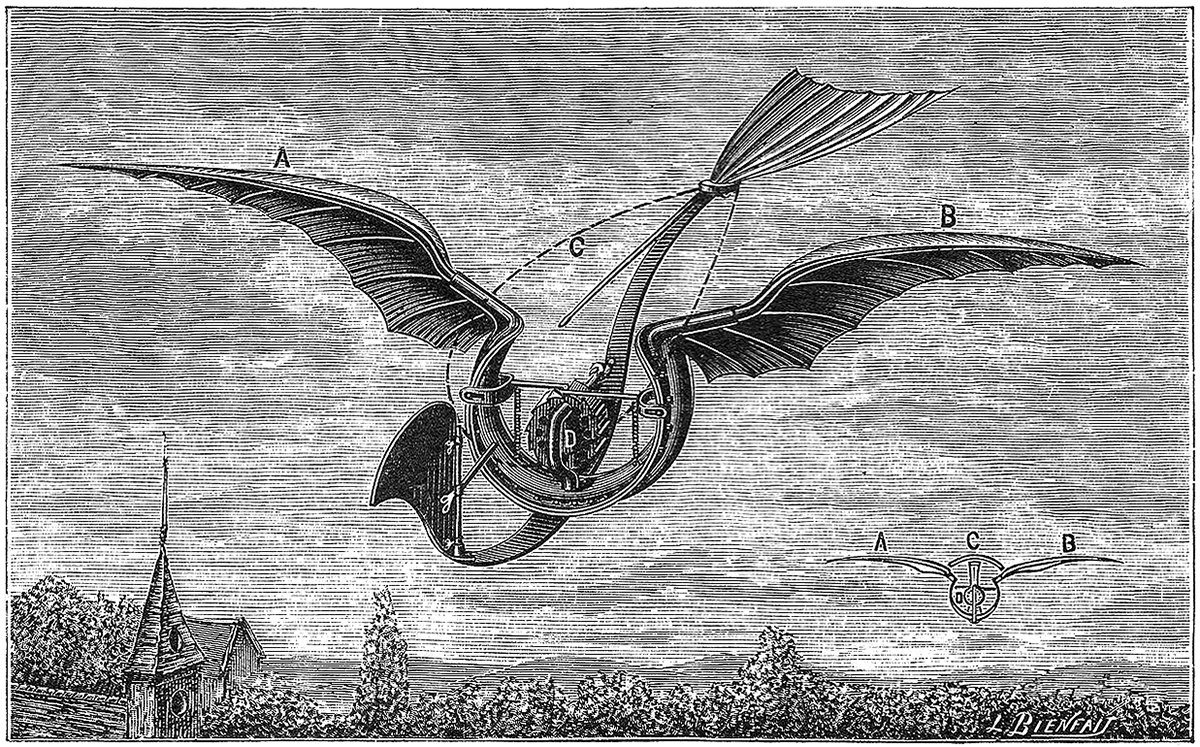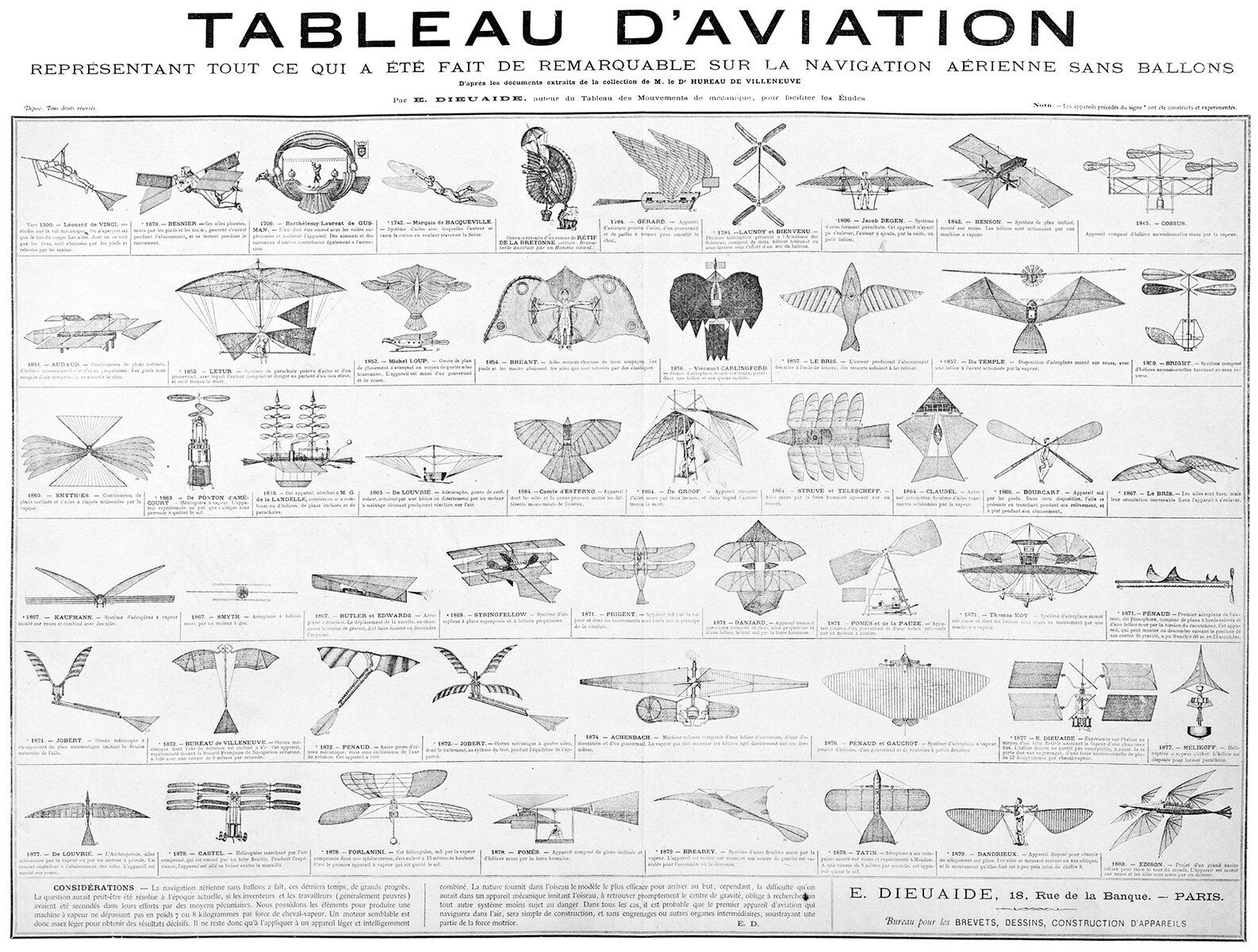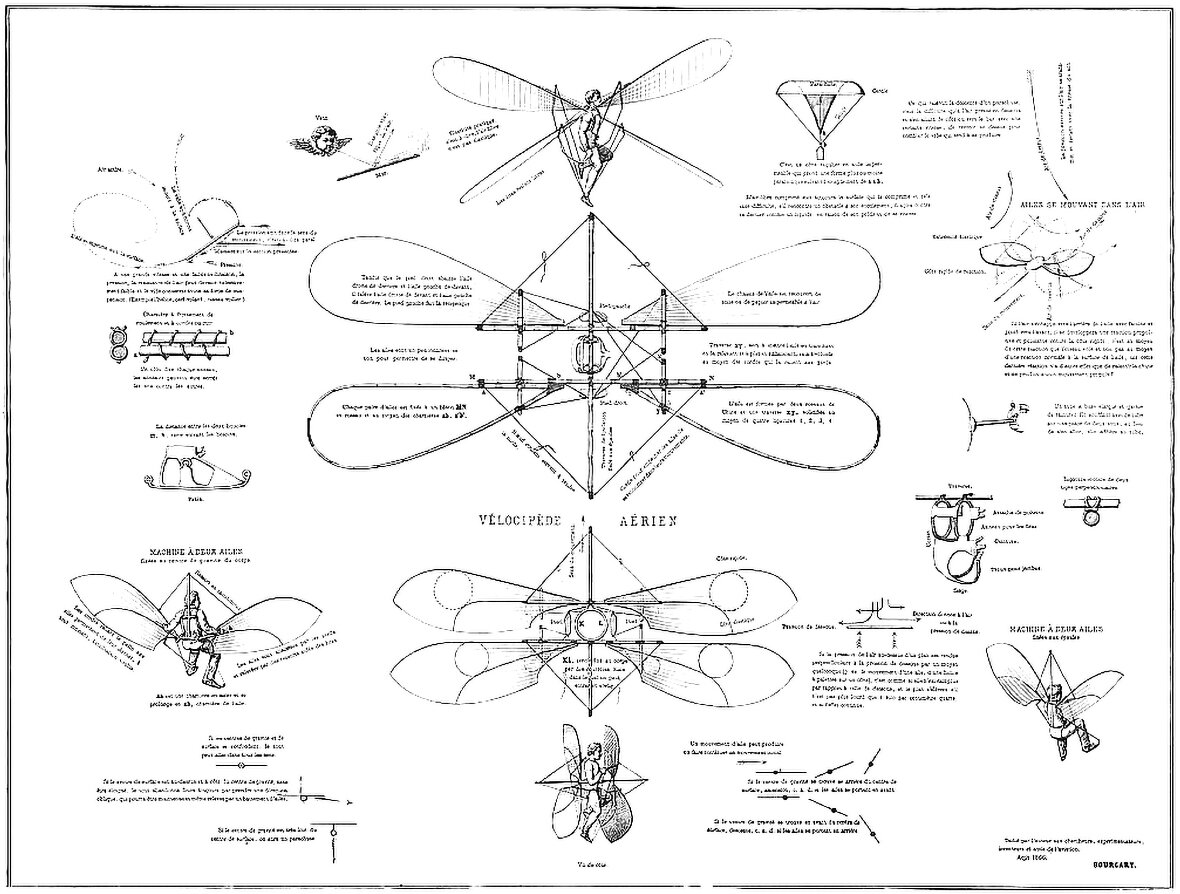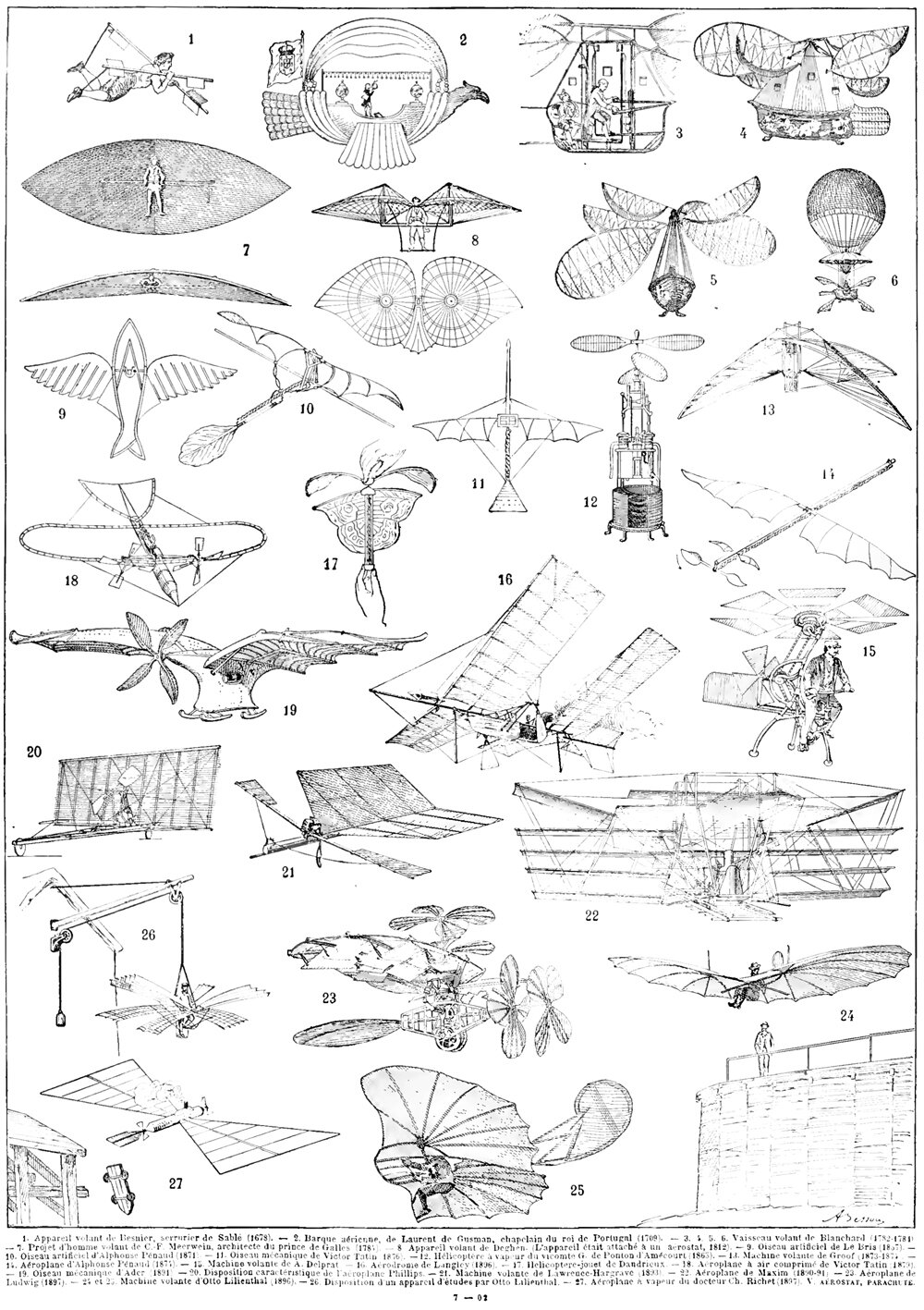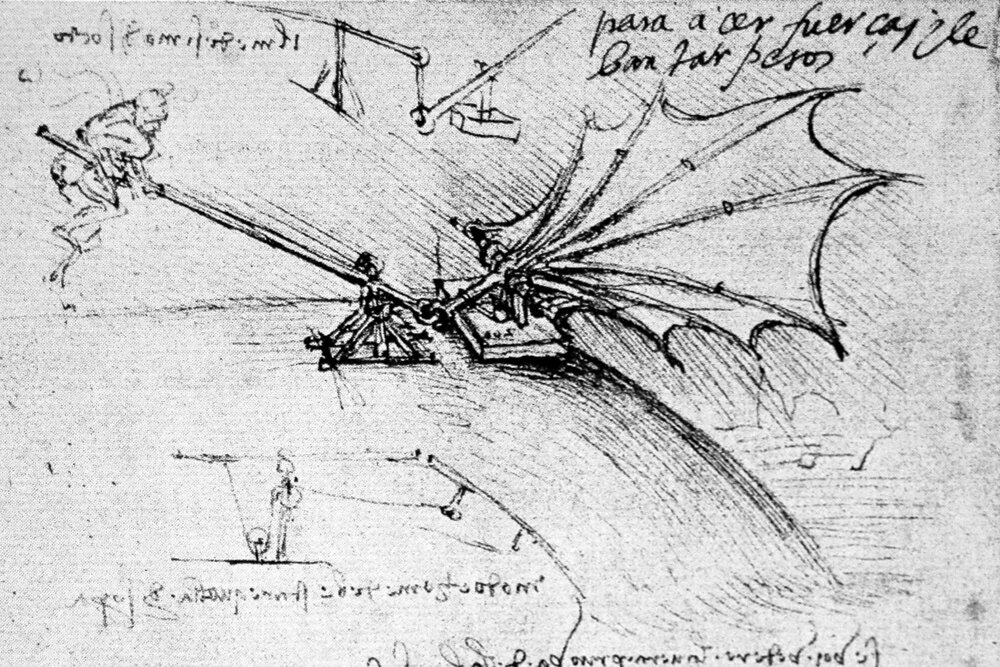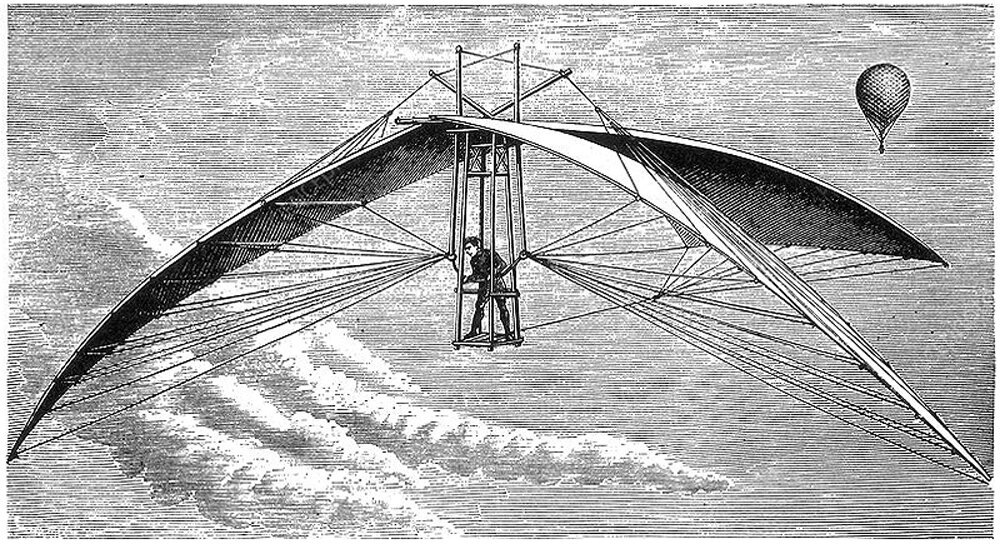Welcome to On Verticality. This blog explores the innate human need to escape the surface of the earth, and our struggles to do so throughout history. If you’re new here, a good place to start is the Theory of Verticality section or the Introduction to Verticality. If you want to receive updates on what’s new with the blog, you can use the Subscribe page to sign up. Thanks for visiting!
Click to filter posts by the three main subjects for the blog : Architecture, Flight and Mountains.
Leonardo da Vinci : 500 Years Too Soon
I see now that man needs something more than strength to propel himself through the air.
E.P. Frost’s Ornithopters
Pictured above is a photo of E.P. Frost’s second ornithopter prototype. It consisted of a large a pair of wings and a metal scaffold, and it was powered by an internal combustion engine. According to Frost, the machine successfully achieved liftoff under its own power in 1904. This wasn’t a sustained flight, however, but rather a jump or a hop.
Gustave Trouvé’s Flügelflieger
Pictured above is an ornithopter design from 1891 by French polymath and inventor Gustave Trouvé. It was called the Flügelflieger, which means winged flyer in German. It featured a pair of wings, a tail, a front rudder, and it was powered by a centrally-placed rapid-succession gun cartridge. Due to the gunpowder charges, the machine was quite loud when flapping. It did work though; according to Trouvé it made a successful flight of 80 meters (262 feet) on 24 August 1891.
Tableau d’Aviation
The creativity and ingenuity on display throughout the history of flying machines is amazing. A quick survey of the table above shows the wide variety of ideas tried out before we humans successfully learned how to fly. One thing I love about this table is that it includes fictional flying machines as well as real prototypes. This shows that fictional designs can and have influenced the history of flight just as real prototypes have.
Jean Jacques Bourcart’s Ornithopter
Pictured above is a series of studies for a flying machine, proposed in 1866 by Jean Jacques Bourcart. Titled Vélocipède Aérien, the drawings show variations on an ornithopter design, in which a human pilot flaps the wings of the craft in order to fly. The subtitle of the illustration reveals that these are studies, tests and inventions which, without solving the problem of aviation, have nevertheless given interesting and encouraging results to the author.
Flying Machines
Throughout history, humans have been fascinated with flight, and some of our more industrious brothers and sisters have dedicated their lives to achieving it. This has led to a rich lineage of ideas for flying machines, and the illustration pictured here shows some famous examples throughout this lineage.
Leonardo da Vinci and Human Flight
Leonardo da Vinci is one of the most influential and prolific thinkers in human history. He is most famous for his paintings, but the man was a true polymath, and he studied and thought about myriad subjects. There is an obsessive curiosity that surrounds his oeuvre, and there doesn’t seem to be a limit to what he would explore. For our purposes here, we’ll focus on his quest for human flight, which he pursued from the late 1480’s to the mid 1490’s.
Vincent de Groof's Ornithopter
This is Vincent de Groof’s design for an ornithopter, built and tested in Bruges and London in the 1870’s. Details about de Groof’s life are sketchy, and newspaper articles from his day tend to contradict themselves. One consistent fact is that he was called The Flying Man. His goal was to achieve flight, and he believed it was possible for a human to fly by imitating the flight of a bird.

